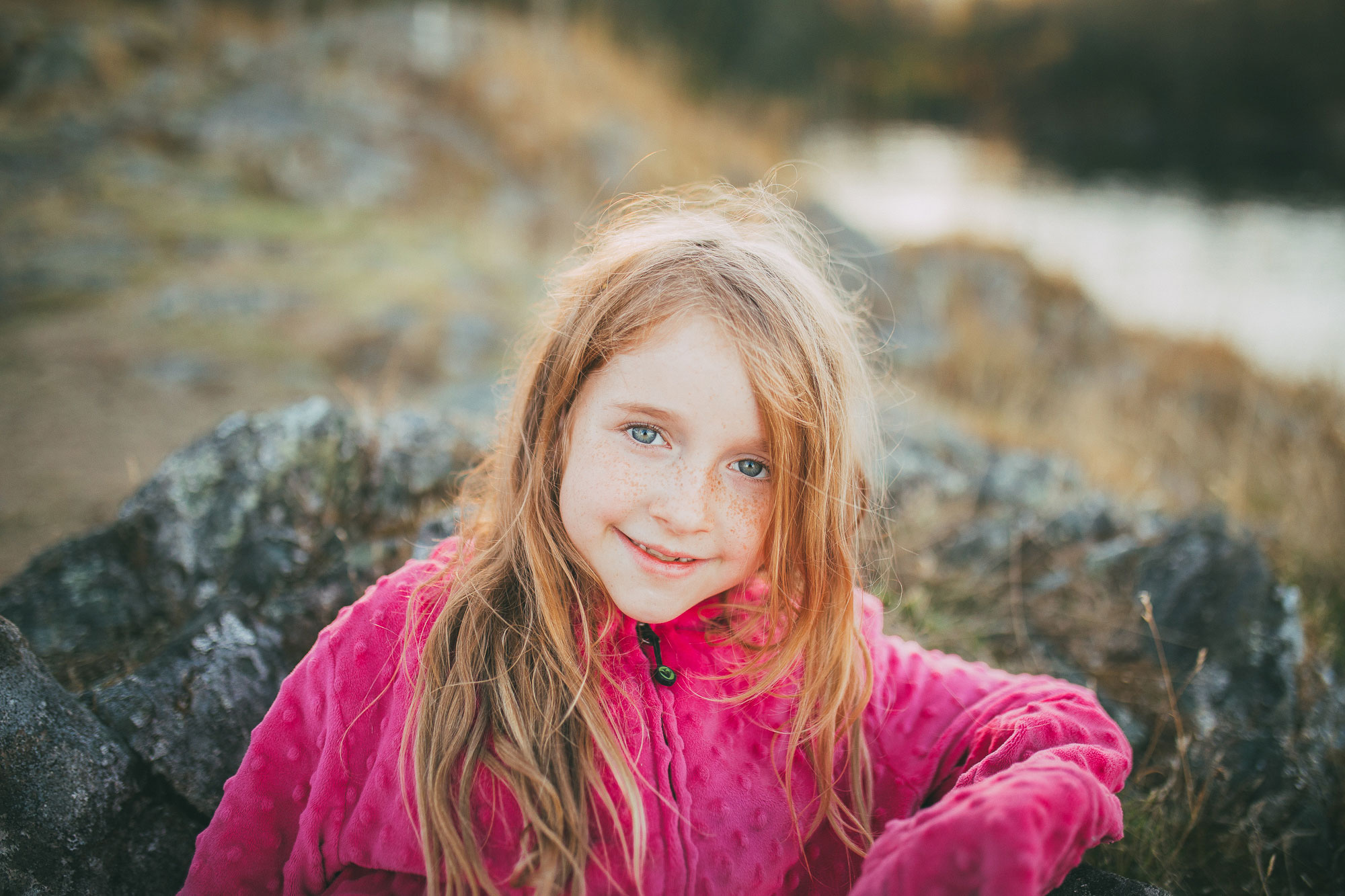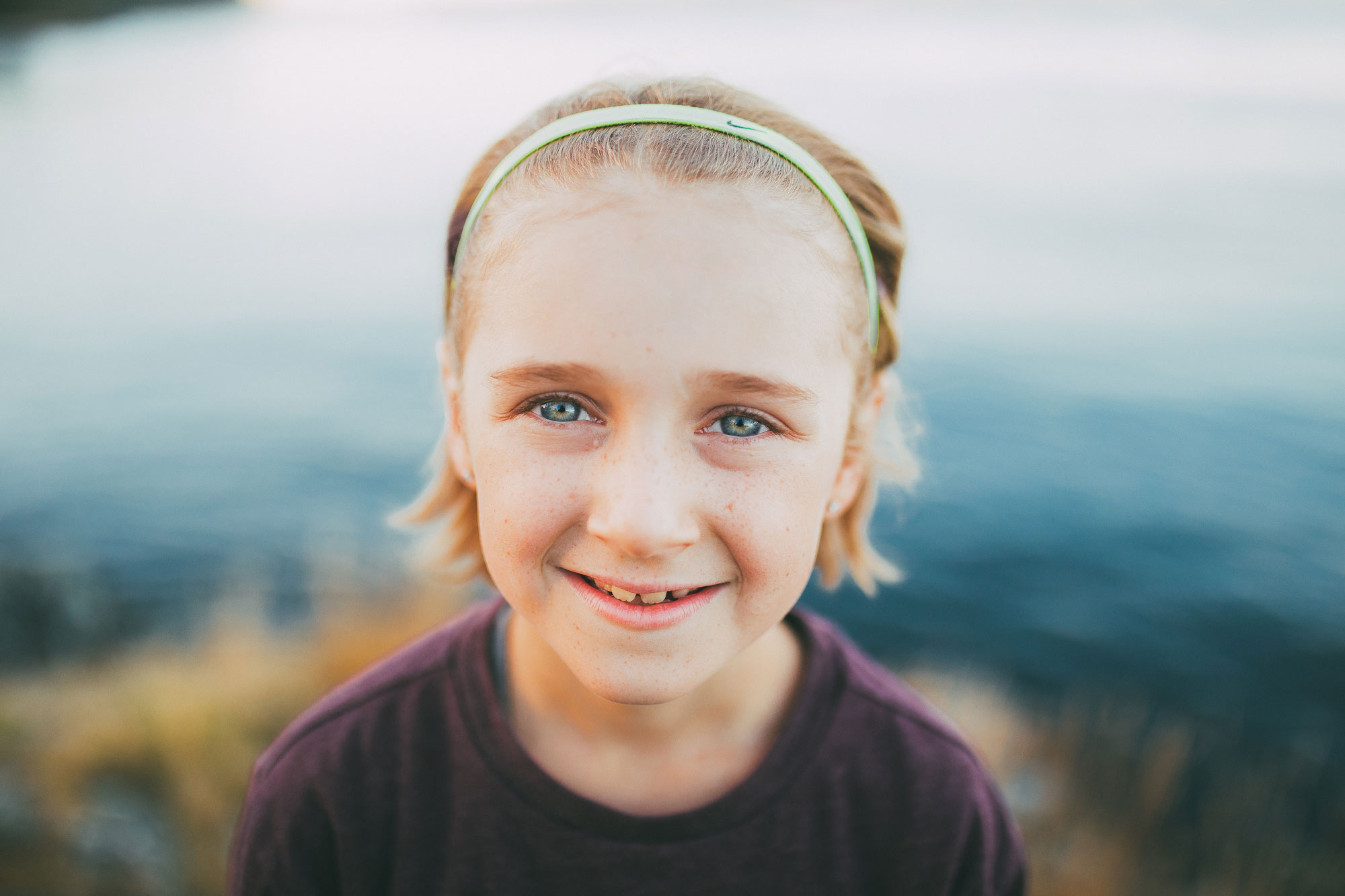I’ve been friends with Xiuhtezcatl Martinez and Earth Guardians for years, and it was through them that I connected with Jan Mangan in British Columbia. Her home on Salt Spring Island became my last stopping point in the entire cycle tour. While I was there, I interviewed her grandkids, Róisín and Galveston, about the future. After a journey that had traversed coastlines threatened by rising sea levels, farm fields in drought, forests on fire and permafrost in upheaval, it seemed appropriate to document one more perspective on climate change—the perspective of the young generation.

“How old are you?” I asked Róisín to start.
She didn’t bat an eye. “I’m ninety-nine.”
“And how old are you actually?”
“I’m twenty-seven.”
She was really seven, and we talked for a couple minutes about seven-year-old things. Bike riding. Ice cream. Climbing things. After our conversation had distracted her a bit from being silly on the audio recording, she told me about a day she spent planting trees as part of Earth Guardians Salt Spring Island. I asked her what it had been like and she said it was fun, exciting and natural.
“What was fun and exciting about planting trees?”
“Because all the gooey soil, and yummy,” came the reply.
“The soil was yummy?” I pretended to be taken aback.
She laughed, and in the recording you can hear her brother laughing too. “Very yummy.”
They planted three or four trees last year, and she still had her eye on them to see how they’re growing. “They’re small,” she said. “Some of them have leaves on them, some of them are shorter than others. They’re skinny.”
I asked what she thought they would be like in the future.
“Big, giant. Humongous trees. With tons of leaves. Tons! Tons!”
A lot of what Róisín said was really funny, but not the way she talked about trees. The way she talked about trees was hopeful and uplifting, like the sight of new buds and melting snow when spring reaches Ontario, or the way pine tree needles lift straighter after a storm.
Planting a tree is what believing in the future looks like. Their worth is measured in decades, in centuries. When you put a tree in the ground, you have to believe that those years have potential. And with this year’s broken heat records and unprecedented hurricanes, climate scientists’ escalating warnings and the paralyzed administration of governments around the world, disbelief surrounds us like floodwaters. It’s an easy step from awareness to cynicism.
So perhaps the best answer to a cynic is a seven-year-old child. Róisín spoke with simplicity and ingenuousness, and she spoke for an entire generation refusing to give up or give in. For her, the future has potential. It has humongous trees with tons of leaves.
Tons!

Listening to the audio recording of Róisín and Galveston is kind of strange because with nothing but their voices, I suddenly realize how different they sound. I would have thought at age seven and nine they’d sound pretty much the same, but they don’t. Galveston’s two years add an edge that’s hard to describe. His voice is a bit deeper. It catches a little easier.
But then he laughs, and he still sounds nine.
Galveston was a bit shyer, so we started out by talking about pro sports and which teams he’s planning on playing for in either baseball (Seattle Mariners) or basketball (Golden State Warriors). After a while, I asked him what he would say to a leader of a country like Canada or the United States.
“Choose me for the Oakland Warriors,” I joked.
“I don’t think so,” he said, smiling because he knew I was joking but not laughing because he was thinking. After a while, he added. “I’d say to not allow any pipelines, first of all. And then put more solar panel yard thingies in, and make mills that put carbon in the air shut down and have less of them.”
I asked why he thought those things were important to a nine year old.
“Because it will make their future better, because it’ll be more eco-ly, and it will just be better.”
I don’t put that much stock in generations theories, but it’s clear to me that this is the voice of something new. From the Boomers, unaware of climate change, to the Millennials, numb with apprehension, to today: a generation that is aware and unafraid, taking action in their neighbourhoods and cities and countries. A generation with the solutions in their hands and a vision for their future.
It will be more eco-ly.
I love these words from Galveston because it’s so clear to me that he’s describing his authentic nine-year-old perspective. More solar panel yard thingies. Less mills putting carbon in the air. He doesn’t have a full vocabulary but he has an understanding of what’s putting his home at risk, and what he can do to protect it.

When you look at the photos of these two kids, I hope you see not just young people whose lives are threatened by the looming threat of climate disruption, but also leaders who are holding the tools we need for climate action. Whenever you feel dispirited, look into their eyes. Listen to them laugh. I shared three days with them on the coast of the Salish Sea and I know with them, tomorrow is bright.